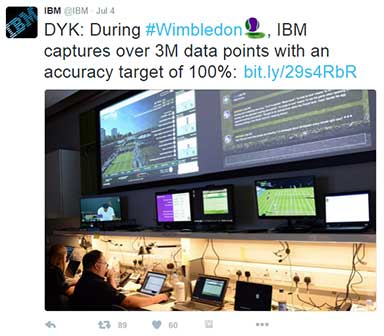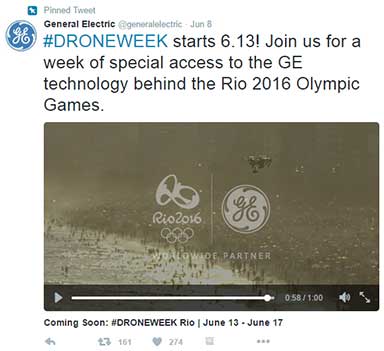Achieving a Delicate Balance Between Organic and Paid Social
We’ve all been there. Zapping for that perfect channel as you sip your favorite beverage, munch on a sweet snack and ooze into your cozy couch. Well, okay, don’t judge me if not.
What if I told you that we as marketers indulge in, and sometimes suffer from, the same channel surfing habit?
With all the noise about how quickly marketing is evolving, we’re constantly scurrying for an opportunity to binge on that new channel that will help us to deliver the right message, to the right audience, at the right time. But what happened to the channel that shaped so much of our digital lingo today? The hashtag. The @ sign. The retweet. The favorite. Oh, how unfaithful we all are!
Is Twitter suffering from some growing pains? Absolutely. It’s hard to deny the facts: Twitter’s market value is half of what it was a year ago, with ad revenues and user count growth slowing. But as far as I can remember from business school, slow growth is still growth, and maturing companies cannot be expected to grow ad revenues at 72% every quarter as Twitter was at the beginning of last year.
And in case you’re skeptical, Twitter’s user base is still growing in the US – with around 53 million users today, expected to increase 35% to 71 million in 2020. That’ll be roughly 20% of the US population using Twitter to follow breaking news stories and their favorite brands. In fact, a whopping nine out of 10 Twitter users use the platform for this purpose.
With all of the concerns being raised, it’s hard to know what the right balance of paid versus organic is. You don’t want to be executing a basic pay-to-play strategy without the promise of results. Just recently, Facebook announced that they’ll be favoring friends and family posts over publishers’ organic posts – indicating that social platforms are continually modifying their products to monetize on ad revenues. Combined with the fact that the average lifespan of a tweet is around 18 minutes, it’s clear that organic alone is not the answer.
However, a strong and engaging organic presence enhances the appeal of paid messaging. If done right, good organic social lends authenticity and a human dimension to the brand, which can build trust and make people more receptive to ads. Let’s examine how some companies are using Twitter to their advantage in an area that many of us love – sports! You’ll be surprised at the innovative tips a B2B marketer can pick up from these examples. Take a look…
The Right Message: Experience Intel
The digital revolution and the rise of big data has made marketing more tangible. Being able to monitor and measure key metrics gives us a sense of control and comfort. But has it distracted us from the intangible, human side of marketing? Intel debuted 360° replays during MLB All-Star Week, touting the 28 cameras, 28 servers and 1TB of data per second that fuel the technology. They’ve called the campaign “Experience Intel,” which appears when highlight-worthy replays come up during the game. With this tweet, Intel has successfully combined both rational and emotional advertising appeals – taking full advantage of in-the-moment, experiential sharing which is what makes Twitter tick. |
 |
The Right Audience: Sports Fans
Don’t you love those real-time stats that sports commentators seem to have readily available at their fingertips? Well, apparently there’s quite a bit of technology that goes into that. Turns out it’s IBM that provides those statistics to the All England Lawn Tennis and Croquet Club (the host of Wimbledon) by capturing 3.2 million data points from 19 courts over 13 days with an accuracy target of 100%. What makes Twitter unique in communicating this message to fans is its ability to act as a social channel that bridges both personal and professional lives. Reaching audiences beyond Monday through Friday when most audiences are tuned into LinkedIn is something most B2B organizations must consider as part of their social strategy. |
 |
The Right Time: Rio 2016 Olympic Games
Twitter’s Periscope acquisition, live Snapchat stories, and Facebook Live are indicators that live video is an emerging medium for B2B companies to be aware of. And GE is not one to be afraid of experimentation. In this tweet, the company promotes its capabilities in a dynamic and engaging way by livestreaming a drones-eye-view of the company’s rarely accessed facilities via Periscope. GE’s timing in launching this campaign is impeccable. It helps associate human scientific achievements with all the physical achievements that will be celebrated at the 2016 Rio Olympic Games. |
 |
What Does This All Mean for B2B Marketers?
In an increasingly digital world, we’re all susceptive to distractions. In our Digital Advertising Sanity Check whitepaper, we show that an average professional may have up to four devices and eight digital identifiers across them. Each scroll potential buyers take through their Twitter feed is an opportunity for you to proactively drive demand. You must be present across your buyers’ digital watering holes to prompt action by your ever-distracted audience. Social is only part of this journey – but an important part of it – and those that fail to message in creative and targeted ways across this channel are missing out on an opportunity to connect with their audiences.
Want to learn more about how to strategically target B2B buyers through social advertising? Contact AudienceSolutions@dnb.com. We promise we won’t make you limit your questions to 140 characters.

